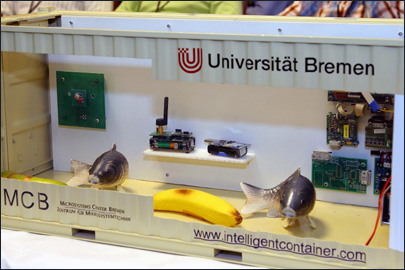A research cluster based in the northern German city-state of Bremen has developed a working model of an intelligent container—a truck logistics system designed to alert users about potentially harmful changes in the temperature and humidity of loads throughout the entire delivery process. Ultimately, the objective is to develop a system able to make and carry out decisions without human involvement.
The project is the result of cross-disciplinary work conducted at the LogDynamics research cluster. This work incorporated contributions from the University of Bremen‘s departments of physics, electrical engineering, mathematics, logistics and business economics.
The goal of the LogDynamics research cluster, partly funded by the German government, is to develop decentralized logistics systems with “autonomous” control, said Dieter Uckelmann, manager of LogDynamics Lab, speaking to attendees at the RFID Journal LIVE! Europe 2006 conference on Thursday. If the research proves successful, various elements of the logistics system will be able to collect information and make decisions based on that information without the need for central oversight.
At present, autonomous control is not yet attainable. Containers can be identified, and the location of the containers can be determined, but these systems are a long way from making decisions based on information collected and using robots to execute those decisions.
The next step for the LogDynamics intelligent-container system is to magnify the model to life size. To this end, the group intends to purchase its own truck with a refrigerated cargo compartment within the next few weeks, with plans to begin testing by the end of the year.

The intelligent container system will transfer data collected by an RFID reader from passive tags on bins holding goods inside a container. By reading the tags, the system will identify which bins are in the container. The system will send data from RFID tags and temperature and humidity sensors to the processor module, which, in turn, will then send information over wireless telecommunications networks to system operators. Data can be sent via WLAN or by a GPRS or UMTS mobile-phone network.
“We’re still in a very early phase,” Uckelmann said. “This project will be funded over 12 years, and we have 10 years to go, with a validation process every four years.”


